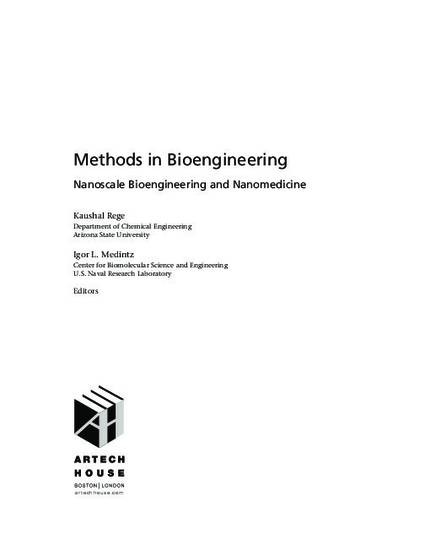
This chapter describes methods of immobilizing proteins on carbon nanotubes, using two different routes—physical adsorption and covalent attachment. We also provide an overview on how such conjugates can be characterized with the help of various techniques, such as Raman, Fourier transform infrared (FT-IR), circular dichroism (CD), and fluorescence spectroscopies, in addition to the standard enzyme kinetic analyses of activity and stability. Both the attachment routes—covalent and noncovalent—could be used to prepare protein conjugates that retained a significant fraction of their native structure and function; furthermore, the protein conjugates were operationally stable, reusable, and functional even under harsh denaturing conditions. These studies therefore corroborate the use of these immobilization methods to engineer functional carbon nanotube-protein hybrids that are highly active and stable.

Reproduced by permission from Kaushal Rege and Igor Medintz, Methods in Bioengineering: Nanoscale Bioengineering and Nanomedicine, Norwood, MA: Artech House, Inc., 2009. © 2009 by Artech House, Inc.